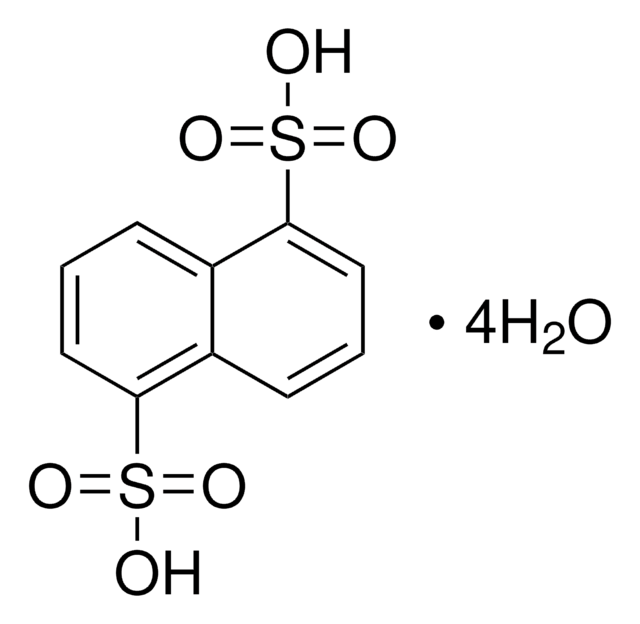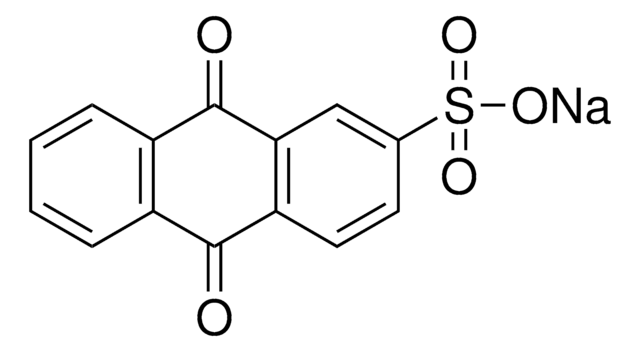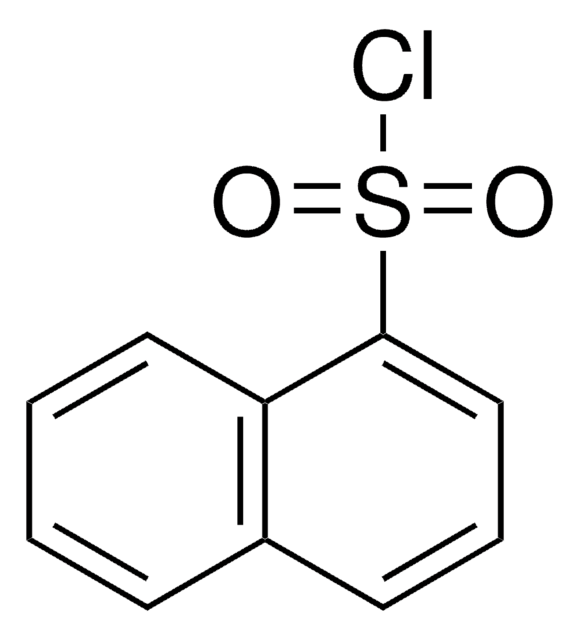All Photos(1)
About This Item
Linear Formula:
C10H7SO3H
CAS Number:
Molecular Weight:
208.23
MDL number:
UNSPSC Code:
12352100
PubChem Substance ID:
NACRES:
NA.22
Recommended Products
form
solid
concentration
>50%
mp
77-79 °C (lit.)
solubility
alcohol: freely soluble
diethyl ether: slightly soluble
water: freely soluble
SMILES string
OS(=O)(=O)c1cccc2ccccc12
InChI
1S/C10H8O3S/c11-14(12,13)10-7-3-5-8-4-1-2-6-9(8)10/h1-7H,(H,11,12,13)
InChI key
PSZYNBSKGUBXEH-UHFFFAOYSA-N
Gene Information
human ... EGFR(1956) , LCK(3932)
Related Categories
General description
Mechanism of metabolism of 1-naphthalenesulfonic acid by green algae Scenedesmus obliquus has been investigated.
Application
1-Naphthalenesulfonic acid was used as template molecule to prepare new non-covalent molecularly imprinted polymer for solid-phase extraction of naphthalene sulfonates.
Other Notes
remainder naphthalenesulfonic acid, sulfuric acid and water
Signal Word
Danger
Hazard Statements
Precautionary Statements
Hazard Classifications
Eye Dam. 1 - Met. Corr. 1 - Skin Corr. 1B
Storage Class Code
8A - Combustible corrosive hazardous materials
WGK
WGK 3
Flash Point(F)
Not applicable
Flash Point(C)
Not applicable
Choose from one of the most recent versions:
Already Own This Product?
Find documentation for the products that you have recently purchased in the Document Library.
Customers Also Viewed
Prajna Mishra et al.
The journal of physical chemistry. B, 123(6), 1256-1264 (2019-01-15)
It has been extremely challenging to detect protein structures with a dynamic core, such as dry molten globules, that remain in equilibrium with the tightly packed native (N) state and that are important for a myriad of entropy-driven protein functions.
H Kneifel et al.
Archives of microbiology, 167(1), 32-37 (1997-01-01)
Under sulfate limitation, axenic batch cultures of the green alga Scenedesmus obliquus metabolized 1-naphthalenesulfonic acid and partially used the sulfonate as a source of sulfur. The main metabolite, 1-hydroxy-2-naphthalenesulfonic acid, which was not metabolized further in the algal culture, was
Ester Caro et al.
Journal of chromatography. A, 1047(2), 175-180 (2004-10-06)
A new polymeric sorbent synthesised by exploiting molecular imprinting technology has been used to selectively extract naphthalene sulfonates (NSs) directly from aqueous samples. In the non-covalent molecular imprinting approach used to prepare this polymer, 1-naphthalene sulfonic acid (1-NS) and 4-vinylpyridine
Christina Gkolfinopoulou et al.
Biochimica et biophysica acta. Molecular and cell biology of lipids, 1865(3), 158593-158593 (2019-12-22)
Several hereditary point mutations in human apolipoprotein A-I (apoA-I) have been associated with low HDL-cholesterol levels and/or increased coronary artery disease (CAD) risk. However, one apoA-I mutation, the V19L, recently identified in Icelanders, has been associated with increased HDL-cholesterol levels
Yan Gong et al.
International journal of biological macromolecules, 101, 32-39 (2017-03-23)
The α-glucosidase inhibitor is of interest to researchers due to its association with type-2 diabetes treatment. Hesperetin is a flavonoid with natural antioxidant properties. This paper presents an evaluation on the effects of hesperetin on α-glucosidase via inhibitory kinetics using
Our team of scientists has experience in all areas of research including Life Science, Material Science, Chemical Synthesis, Chromatography, Analytical and many others.
Contact Technical Service












